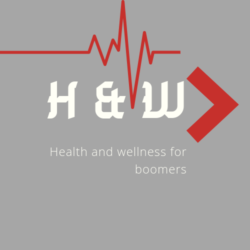
In this post, I am taking a look at Hepatitis C among boomers. In doing my research for this post, I discovered a few facts that surprised me.
In this post, I will be looking at hepatitis C and the Boomer Generation. This Viral Disease Poses a Problem for Boomers.
Hepatitis C is a viral infection that causes liver inflammation, sometimes leading to serious liver damage. The hepatitis C virus (HCV) spreads through contaminated blood.
Hepatitis C infection is caused by the hepatitis C virus (HCV). The infection spreads when blood contaminated with the virus enters the bloodstream of an uninfected person.
Globally, HCV exists in several distinct forms, known as genotypes. Seven distinct HCV genotypes and more than 67 subtypes have been identified. The most common HCV genotype in the United States is type 1.
Although chronic hepatitis C follows a similar course regardless of the hepatitis C virus (HCV) genotype, infection causes acute hepatitis C, which may progress to chronic hepatitis C. Many people with hepatitis C do not show symptoms until severe liver damage. If it is not treated, chronic hepatitis C can cause life-threatening liver disease.1,2
Unfortunately, about 60 percent of people in the U.S. with hepatitis C know they have it. This means access to testing limits our ability to address hepatitis C.3
Chronic hepatitis C has been most common among people born between 1945 and 1965 (Baby Boomers). Now, because of the opioid crisis, new HCV infections occur more in people born between 1981 and 1996 (Millennials).
To address this, the CDC and other organizations now recommend that all adults get tested for hepatitis C at least once. They also recommend that people with ongoing risk factors get tested regularly.
Are Baby Boomers at a higher risk for infection?
A CDC report in 2012 showed that about 1 in 30 Baby Boomers were infected with HCV. This infection rate was 5 times higher than for other generations. And Baby Boomers made up about 75 percent of all chronic HCV infections among U.S. adults.1,4
The CDC then recommended Hepatitis C screening for all Baby Boomers. This helped identify more chronic hepatitis C cases than the previous guidelines based only on risk factors. However, the hepatitis C epidemic has changed since 2012. Because of increased injection drug use, new HCV infections are more common in young adults. According to a CDC study in 2018, Millennials and Baby Boomers each make up 36 percent of new chronic hepatitis C infections. People born between 1966 and 1980 (Generation X) make up about 23 percent of new infections.2,5
Hepatitis C is still a concern for Baby Boomers because of their individual risk factors. But the opioid crisis is also increasing the risk for all generations.
Why is the infection risk higher for Baby Boomers?
We do not know why Baby Boomers have a higher risk of HCV infection. Some studies suggest that they were more exposed to injection drug use during young adulthood in the 1970s and 1980s.1 Also, many Baby Boomers may have been infected by blood transfusions before we began screening the blood supply in 1992. It is also possible that HCV infections were more common because of poor medical practices at the time.6,7
Other studies also show that lack of health insurance, use of alcohol, and service in Vietnam may have contributed to the higher infection risk. Most Baby Boomers with chronic hepatitis C will not know how they were infected.4,8
What are the current testing recommendations for Baby Boomers?
The CDC now recommends testing for:5
- Every adult at least once
- Pregnant women during every pregnancy
- Everyone with current risk factors regularly
Risk factors include injection drug use, sharing drug preparation equipment, and certain medical conditions. Talk to your doctor to discuss your risk factors and how often you should get tested.9
Testing is essential for Baby Boomers. Living longer with chronic hepatitis C increases the chances of serious liver disease. Testing can help you get treated quicker.7
If you and your doctor decide you should be tested, you may first take an FDA-approved test for a hepatitis C antibody. A positive test means you were exposed to the virus. Either you have an active infection, or you fought off a previous infection. You would then take an FDA-approved test for HCV RNA. If this test is positive, it means you have an active hepatitis C infection.9
Your doctor can give you more information specific to your situation. Then, they can help you get tested, advise you on precautions to take, and help you get treatment if needed.
Why Get Tested?
Hepatitis C is a silent disease. Three out of four people who’ve been infected don’t know they have it.
A blood test is the only way to determine if you’ve been infected before the virus causes serious health problems. If your test shows you have it, antiviral drugs can cure it in most cases and prevent future issues.
“It’s so sad when we see patients who have been unknowingly infected for many years and come in with cirrhosis, cancer, or liver failure,” says Sammy Saab, MD, professor of medicine and surgery at UCLA.

Understanding Your Hep C Risk
Been exposed to IV drug use or unprotected sex before the virus was known about or anyone was being tested for it. Baby boomers’ chances of having hepatitis C are higher.
Some could have gotten it through a blood transfusion or organ transplant before widespread screening of the blood supply began in 1992.
While it was once uncommon among younger people, their odds of having it has risen sharply in recent years.
One reason for that could be the increase in IV drug use caused by the growing opioid problem.
Seventy-three percent of those surveyed correctly said that all baby boomers should be tested, but nearly three-quarters of survey respondents between the ages of 18 and 38 didn’t think they were at risk.
https://www.youtube.com/watch?v=VNe0SJnWckQ
Symptoms
Long-term infection with the hepatitis C virus is known as chronic hepatitis C. Chronic hepatitis C is usually a “silent” infection for many years until the virus damages the liver enough to cause the signs and symptoms of liver disease.
Signs and symptoms include:
- Bleeding easily
- Bruising easily
- Fatigue
- Poor appetite
- Yellow discoloration of the skin and eyes (jaundice)
- Dark-colored urine
- Itchy skin
- Fluid buildup in your abdomen (ascites)
- Swelling in your legs
- Weight loss
- Confusion, drowsiness, and slurred speech (hepatic encephalopathy)
- Spiderlike blood vessels on your skin (spider angiomas)
Every chronic hepatitis C infection starts with an acute phase. Acute hepatitis C usually goes undiagnosed because it rarely causes symptoms.
However, when signs and symptoms are present, they may include jaundice, fatigue, nausea, fever, and muscle aches.
Acute symptoms appear one to three months after exposure to the virus and the last two weeks to three months.
Acute hepatitis C infection doesn’t always become chronic. Some people clear HCV from their bodies after the acute phase, an outcome is known as spontaneous viral clearance.
In studies of people diagnosed with acute HCV, rates of spontaneous viral clearance have varied from 15% to 25%. Acute hepatitis C also responds well to antiviral therapy.

Causes
Hepatitis C infection is caused by the hepatitis C virus (HCV). The infection spreads when blood contaminated with the virus enters the bloodstream of an uninfected person.
Globally, HCV exists in several distinct forms, known as genotypes. Seven distinct HCV genotypes and more than 67 subtypes have been identified.
The most common HCV genotype in the United States is type 1.
Although chronic hepatitis C follows a similar course regardless of the genotype of the infecting virus, treatment recommendations vary depending on viral genotype.
Risk factors
Your risk of hepatitis C infection is increased if you:
- Are a health care worker who has been exposed to infected blood, which may happen if an infected needle pierces your skin
- Have you ever injected or inhaled illicit drugs
- Have HIV
- Received a piercing or tattoo in an unclean environment using unsterile equipment
- Received a blood transfusion or organ transplant before 1992
- Received clotting factor concentrates before 1987
- Received hemodialysis treatments for a long period of time
- Were born to a woman with a hepatitis C infection
- Were ever in prison
- Were born between 1945 and 1965, the age group with the highest incidence of hepatitis C infection
Complications
Hepatitis C infection that continues over many years can cause significant complications, such as:
- Scarring of the liver (cirrhosis). After decades of hepatitis C infection, cirrhosis may occur. Scarring in your liver makes it difficult for your liver to function.
- Liver cancer. A small number of people with hepatitis C infection may develop liver cancer.
- Liver failure. Advanced cirrhosis may cause your liver to stop functioning.
Prevention
Protect yourself from hepatitis C infection by taking the following precautions:
- Stop using illicit drugs, particularly if you inject them. If you use illicit drugs, seek help.
- Be cautious about body piercing and tattooing.
- If you choose to undergo piercing or tattooing, look for a reputable shop.
- Ask questions beforehand about how the equipment is cleaned. Make sure the employees use sterile needles.
- If employees don’t answer your questions, look for another shop.
- Practice safer sex. Don’t engage in unprotected sex with multiple partners or any partner whose health status is uncertain. Sexual transmission between monogamous couples may occur, but the risk is low.
Treatment
Antiviral medications
Hepatitis C infection is treated with antiviral medications intended to clear the virus from your body.
The goal of treatment is to have no hepatitis C virus detected in your body at least 12 weeks after you complete treatment.
Researchers have recently made significant advances in treatment for hepatitis C using new, “direct-acting” antiviral medications, sometimes combined with existing ones.
As a result, people experience better outcomes, fewer side effects, and shorter treatment times — some as short as eight weeks.
The choice of medications and length of treatment depends on the hepatitis C genotype, existing liver damage, other medical conditions, and prior treatments.
Due to the pace of research, recommendations for medications and treatment regimens are changing rapidly.
It is, therefore, best to discuss your treatment options with a specialist.
Throughout treatment, your care team will monitor your response to medications.
Liver transplantation
If you have developed serious complications from chronic hepatitis C infection, liver transplantation may be an option.
During liver transplantation, the surgeon removes your damaged liver and replaces it with a healthy liver.
Most transplanted livers come from deceased donors, though a small number come from living donors who donate a portion of their livers.
In most cases, a liver transplant alone doesn’t cure hepatitis C. Instead, the infection is likely to return, requiring treatment with antiviral medication to prevent damage to the transplanted liver.
Several studies have demonstrated that new, direct-acting antiviral medication regimens are effective at curing post-transplant hepatitis C.
Vaccinations
Although there is no vaccine for hepatitis C, your doctor will likely recommend that you receive vaccines against hepatitis A and B viruses.
These are separate viruses that also can cause liver damage and complicate the course of chronic hepatitis C.
I have left a straightforward exercise from Silver Sneakers. I hope you enjoy it.
The 5-Minute Seated Cardio Blast
Thank you for your time; I hope you found the information in this post useful; your comments and questions are welcomed.
Please remember to share this post and stay healthy.
NOTE: This post includes affiliate links, which, if clicked on and a product purchased, I get a small commission (with no increase in cost to you)









